Elgin Park Secondary 24-25
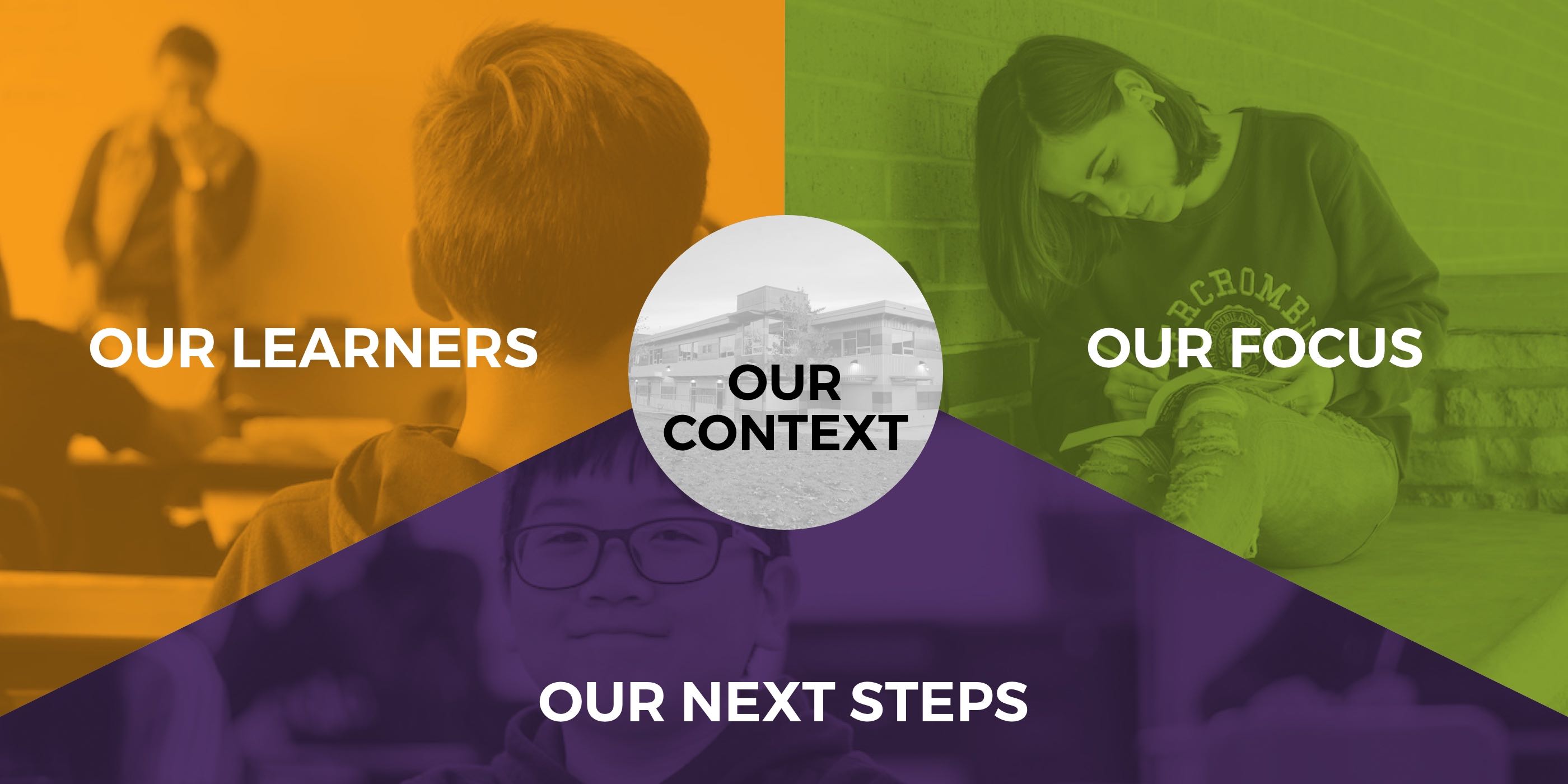

OUR CONTEXT

Elgin Park is a secondary school in the Surrey School District and is nestled in a beautiful community setting in South Surrey. We are a school that is proud to acknowledge that we work, learn, and connect on the traditional, unceded, and ancestral territory of the Katzie, Kwantlen, Semiahmoo, and other Coast Salish Peoples past and present.


Elgin Park was opened on the south peninsula in 1993 in close proximity to Crescent Beach. We are a school community that celebrates a culture of learning excellence and we offer rigorous academics along with essential electives that include: band, arts, athletics, technology, and home economics. Our current school population is made up of just over 1,420 students and just over 100 staff members.
Elgin students thrive in a culture that focusses on the individual goals of each of our students. We welcome approximately 130 International students each year and our students are highly engaged in rich extra curricular clubs and opportunities both in school and out of school. There is a high drive to attend post secondary institutions both locally and internationally. We have a strong tradition of highly engaged and committed parent/guardians who contribute to the school through a strong PAC and also through Dry Grad. Elgin Park is a school that is student centered and our staff are committed to providing the best learning environment possible.
At Elgin Park we emphasis community, connection, and social emotional learning. Throughout the year, students and staff engage in meaningful school community events that celebrate our staff and students. From athletics to band concerts to art shows and clubs/committees day, all of our Orcas come together as a Pod!
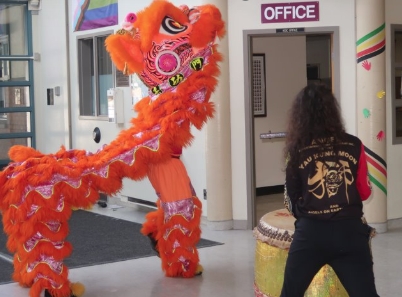 Our Goals
Our Goals
Our student learning plan focuses on the following areas. These goals were selected based on initially looking at each department and their individual goals. From there, we zoomed out to look at the collective bigger picture of what exactly it is we want our students to achieve once they leave high school. Here are our areas of focus:
- Improving student literacy/numeracy skills. Our learners can think critically, creatively, and reflectively to analyze ideas within, between, and beyond texts.
- Learning is not compartmentalized; rather, learning is deeply connected, interwoven, and can be transferred. Our learners can make connections between curricular areas and the real world.
- Our learners can use strategies to self regulate and focus on their well being. Developing SEL wellness through a focus on directly teaching strategies to self regulate for all students - Communication, Thinking, Personal/Social.
- Building positive school environment and culture that celebrate all learners. Our learners feel a sense of belonging, care, and support in our school. Our learners are diverse and the curriculum supports and allows students to connect to curricular areas.
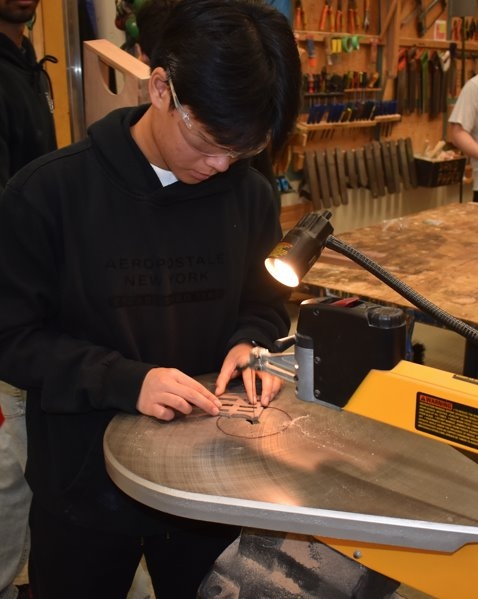
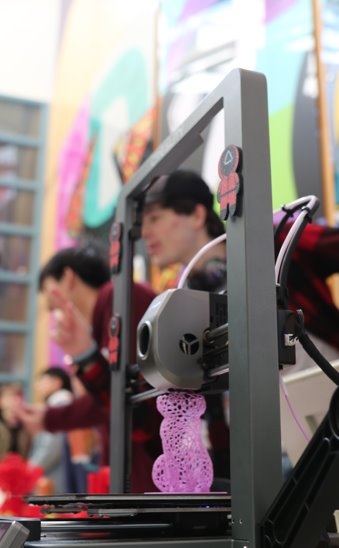
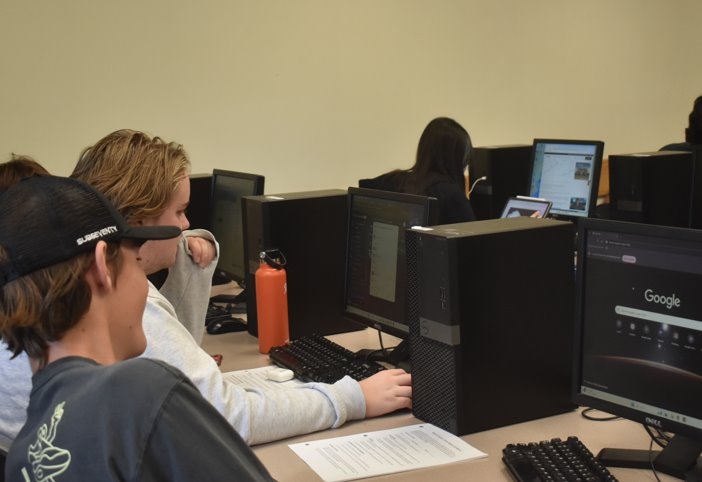
OUR LEARNERS
Elgin Park is the Home of the Orcas! Most of our students arrive to us from our associate elementary schools located in the neighbourhood - Chantrell Creek, Crescent Park, Ocean Cliff, Ray Shepherd, and Semiahmoo Trail. We welcome the largest number of International students in the Surrey School District. Upon arrival to Elgin Park, regardless of where our learners are coming from, our students focus on growing their understanding both of the curricular areas and of themselves through core competencies.
Learning is more than just sitting at a desk... learning is an experience. Our learners are engaged in hands-on, experiential learning with the goals of elevating and amplifying the Core Competencies of Communication, Thinking, and Personal/Social. Each of these Core Competencies are embedded in the Curricular Competencies.
The Communication competency "encompasses the knowledge, skills, processes and dispositions we associate with interactions with others. Through their communication, students acquire, develop and transform ideas and information, and make connections with others to share their ideas, express their individuality, further their learning, and get things done. The communication competency is fundamental to finding satisfaction, purpose and joy. "
The Thinking competency "encompasses the knowledge, skills and processes we associate with intellectual development. It is through their competency as thinkers that students take subject-specific concepts and content and transform them into a new understanding. Thinking competence includes specific thinking skills as well as habits of mind, and metacognitive awareness. These are used to process information from a variety of sources, including thoughts and feelings that arise from the subconscious and unconscious mind and from embodied cognition, to create new understandings. "
Lastly, the Personal and Social competency is the "set of abilities that relate to students' identity in the world, both as individuals and as members of their community and society. Personal and social competency encompasses what students need to thrive as individuals, to understand and care about themselves and others, and to find and achieve their purposes in the world."
Our learners strive to develop their communication and collaboration skills because that is what the world requires currently and especially for the future. Students must be able to fluidly move from thinking and working independently to working with others and show that they value the contributions of others around them. Learning can not be done in isolation so our students strive to connect and engage with others and they recognize that their communication contributes to their own growth and also of those around them.
 Students in Calculus 12 created a project using the curricular competencies in Calculus but also accessed their core competencies of working in collaboration with others.
Students in Calculus 12 created a project using the curricular competencies in Calculus but also accessed their core competencies of working in collaboration with others.
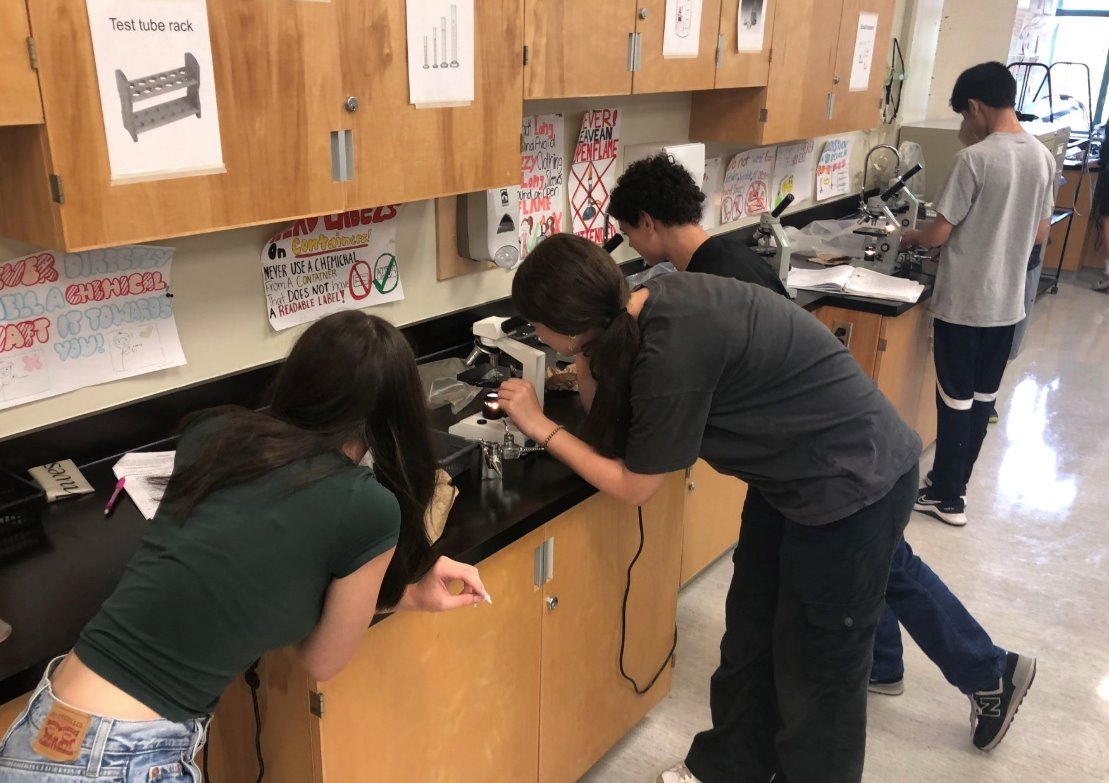 Our Science courses are heavily focused on applying hands-on/experiential learning each day.
Our Science courses are heavily focused on applying hands-on/experiential learning each day.
Take care of others is important! We have a very large all school Terry Fox Run that includes walking, running, or rolling for Terry, collecting money for the Terry Fox Foundation, and then a school wide BBQ.

Elgin has one of the largest band and music programs in the district! Band is a great example of blending literacy with social well being and connection.
OUR FOCUS
At Elgin Park, our focus on student learning means that we have larger school wide goals but at the same time we ensure that each individual student is also able to strive towards their own personal goals. By focusing on the social-emotional wellbeing of our students (SEL) we work towards ensuring that the core competencies support our student learning in the curricular areas. If students are feeling regulated emotionally and have the tools for self-regulation, they can then focus on their learning in the curricular areas.
By using the core competencies as our foundation for all student learning, our school goals include:
- Improving student literacy/numeracy skills. Our learners can think critically, creatively, and reflectively to analyze ideas within, between, and beyond texts.
- Learning is not compartmentalized; rather, learning is deeply connected, interwoven, and can be transferred. Our learners can make connections between curricular areas and the real world.
- Our learners can use strategies to self regulate and focus on their well being. Developing SEL wellness through a focus on directly teaching strategies to self regulate for all students - Communication, Thinking, Personal/Social.
- Building positive school environment and culture that celebrate all learners. Our learners feel a sense of belonging, care, and support in our school. Our learners are diverse and the curriculum supports and allows students to connect to curricular areas.
Each department (curricular area) is led by department leaders (teachers). At the beginning of the year, each department created goals that connect to the overarching school goals listed above. While each department focused on specific curricular goals, it was important for learners to recognize that there is overlap in learning areas.
2022-2023 to 2024-2025
We selected a cohort of students ranging from Grades 9 to 10 who were at school everyday, had positive connections with staff, and needed targeted interventions to support their learning. We assigned an LST teacher to support these students for one block a day. He focused on providing literacy and numeracy supports and worked with them in small groups.
The second and third year, instead of assigning the students a support block, we allowed them to access support throughout the day as we noticed that the check ins in year one seemed to be of the most benefit throughout the day instead of during one allocated block.
The teacher used strategies such as:
1. Breaking down the curricular areas by working with the teachers so that the students could complete smaller sized assignments while still showing curricular understanding.
2. Providing short "brain breaks" as these students struggled with staying engaged for long periods of time.
3. Accessed "Flex Time" as time to focus on core competencies. This included time to play social games, go for walks, engage in group and collaborative work.
4. Provided supportive strategies for teachers. We bought games, fidget toys, colouring books to allow for teachers to allow for breaks in class.
5. At staff meetings, with all teaching staff, we focused on "Triangulating Evidence of Learning." While our cohort students benefitted from this, we felt that all students could also benefit from this.
How did we measure success?
As shown below, we measured student success by accessing their report cards and also reporting back from the teacher, their counsellors, and classroom teachers.
| Student | Year One | Year Two | Year Three |
| MK - Grade 10 | Emerging | Developing/Proficient | Graduating |
| LK - Grade 9 | Emerging | Developing/Proficient | Graduating |
| SC - Grade 9 | Emerging | Emerging | Emerging/Developing |
| MA - Grade 9 | Emerging | Emerging | District Program (Ed Services) |
| MA - Grade 10 | Emerging | Emerging | Moved |
| AC - Grade 10 | Emerging | Developing/Proficient | Graduating |
| DA - Grade 10 | Emerging | Proficient | Graduating |
| HJ - Grade 10 | Emerging | Moved | - |
| MD - Grade 11 | Emerging | Graduated | - |
We also used a school wide survey to access broader views from our students about our school goals.
Goals:
- Improving student literacy/numeracy skills. Our learners can think critically, creatively, and reflectively to analyze ideas within, between, and beyond texts.
- Learning is not compartmentalized; rather, learning is deeply connected, interwoven, and can be transferred. Our learners can make connections between curricular areas and the real world.
Question One:
How do you approach learning new concepts or skills? What can teachers do to support you? What can you do better to support your own growth? Here are some responses:
Student One:
| Teachers being understanding of student concerns of learning progress or grades can be beneficial to having a healthy learning/studying habit. Being able to focus straight on a subject, and avoiding procrastination is key to successful education. |
Student Two:
| When approaching new concepts i like to ask questions and get help when i need it. I hope teachers can help answer my questions when i ask for help and support me on areas i am weak on. |
Student Three:
| When I am learning new information in class, and happen to be struggling with a concept, teachers can help by giving out a variety of learning techniques. Having a variety of different learning techniques is beneficial, because there are often easier ways that lead me to success (that aren’t usually shared.) I can support my own growth by asking for help more often, from my peers, teachers, or even additional support. I can work on better note taking or studying techniques as well. |
Student Four:
| As I said before, each time a new concept or skill is introduced I make an effort to regard it without bias. To support me, teachers can familiarize the concept by connecting it to previous concepts or information. For my own growth, I will try to continue this mindset even when it is difficult to do so. |
It was interesting to see in the responses that students shared, that they wanted to better make connections between themselves and their learning. Many were able to share that they wanted to be able to have access to different ways of learning if a concept wasn't making sense to them.
Goal:
- Our learners can use strategies to self regulate and focus on their well being. Developing SEL wellness through a focus on directly teaching strategies to self regulate for all students - Communication, Thinking, Personal/Social.
Question Two: How do you manage stress and maintain a healthy balance between school and personal life?
Student One:
| I try my best to reward myself with something I enjoy after school like the gym or a hobby. |
Student Two:
| I have a schedule i stick to. i get my work done when it’s handed to me and i find time to do things at home. sometimes i spend an hour doing one thing and an hour doing another thing to balance time. |
Student Three:
| These are the steps I follow 1. Identify the stress point. What’s making me stressed? 2. Can I do anything about it? If not, why worry? 3. Do something about it. If I can do something about it, why worry? Example: 1. I’m stressed because of an upcoming test 2. I can study (do something about it) 3. I am no longer stressed 1. I’m stressed because of something completely out of my control 2. Can I do something about it? No. 3 why worry |
Student Four:
| I try to maintain a healthy balance between school and personal life by completing schoolwork before starting personal activities. I manage stress by taking my dog out for a walk and getting massages. |
Student Five:
| I dance and play soccer so at those activities I get to have a break from the stress of other parts of life. Sometimes if my work load is heavy dance and soccer causes more stress thus I take breaks from these activities to get all caught up. |
Student Six:
| i mostly focus on life outside of school stuff like work, when i should be focusing on school as well. so that stresses me out when my grade is low. |
Student Seven:
| I am an extremely anxious individual, but I have implemented many strategies into my everyday life to cope with my struggles. I make sure to give myself atleast an hour a day to unwind, whether it be going on a 15 minute nature walk or sitting on the patio with my pups. It helps me reflect on my day and make sure I have a clear mind for the day ahead. I also ensure that I make a to do list each day after school so I don’t fall behind in terms of my school work and manage my time efficiently so I can still spend time with my family. |
OUR NEXT STEPS
Each day, staff at Elgin Park work with students and their learning. Literacy is something that is a necessity in every curricular area... it is the foundation of all student learning. So what are our next steps to continue to support our school goals?
In looking at our cohort of learners from 2022 to present, the things we could measure was their success rates through analyzing report cards and anecdotally through conversations with both students and staff. The feedback from the student survey was helpful and enlightening as well. Our focus had been on a small group of students, but what would happen if the school wide intervention was that we collectively worked together to better allow students to understand that they can show their learning in different ways? What if they actually explicitly knew this?
For the next school year, we as a school are going to focus more on "Triangulation of Evidence." If teachers have the tools to adapt for our learners on the spot in their classrooms, could we find this level of success for more learners across more areas?
Guiding Questions
- How do we adapt for our learners using "triangulation of evidence" on a day to day basis so it is naturally build in?
- How do each of the core competencies specifically connect in each curricular area?
- How do staff ensure that students see that each curricular area is interwoven and that learning can be (and should be) transferred?
- In moving towards assessment practices that are proficiency based versus volume of work completed, are students able to better see their areas of growth and areas that are stretches?
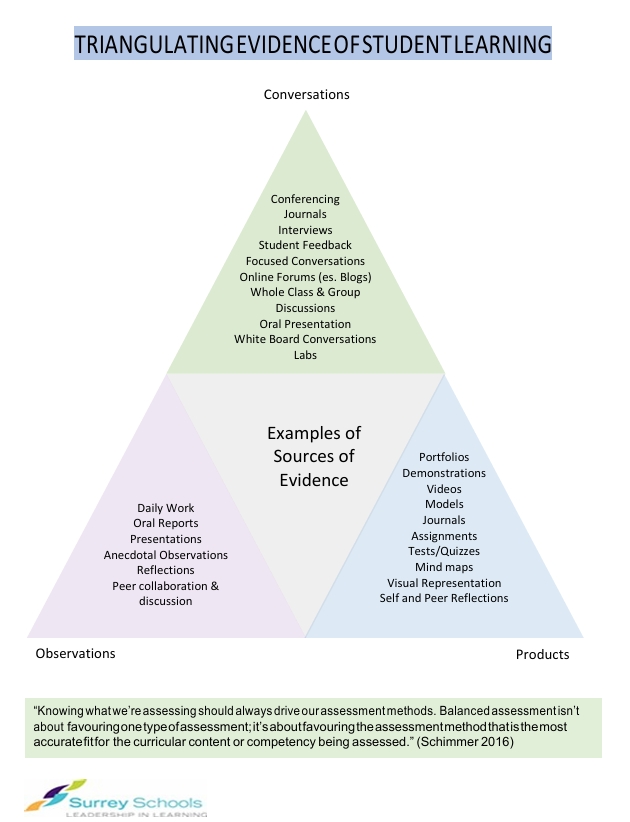
How will we work towards our school goals?
- Have our "Inclusive Education" Department (comprised of LST, LSB, BASES, and ELL) mentor and co-create with our larger staff in all curricular areas.
- Create opportunities for staff and students to experience cross curricular learning so that learners can experience the interconnectedness of their learning.
- Connect with learners from all grades to gather information around what students perceive about their learning, social emotional well being, and also school culture. Develop venues for more student voice.
- Continued opportunities for professional development for all staff including topics such as:
- including First Peoples' voices in all curricular areas in a variety of ways,
- supporting BIPOC learners,
- supporting SEL for all learners to ensure equity and inclusive practices

